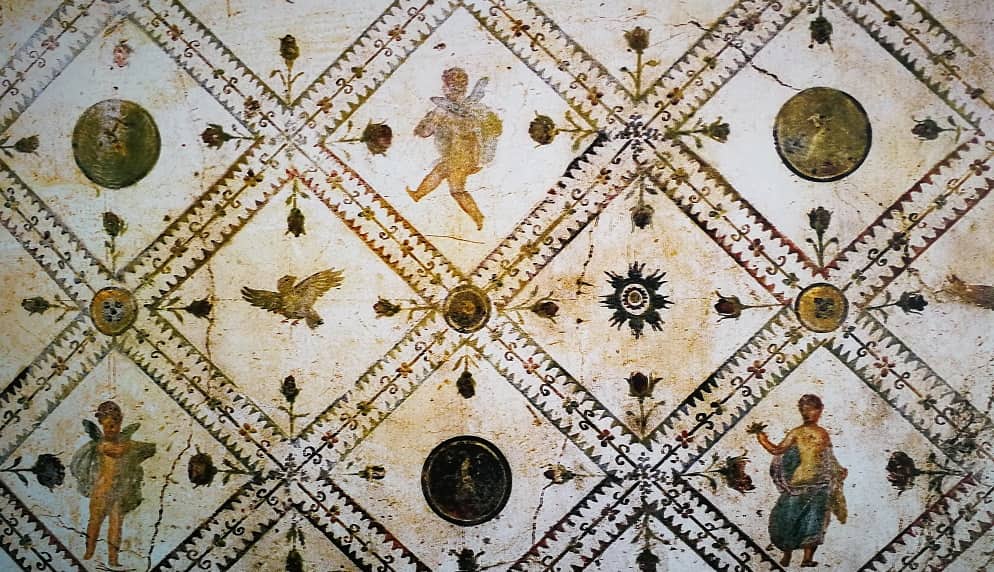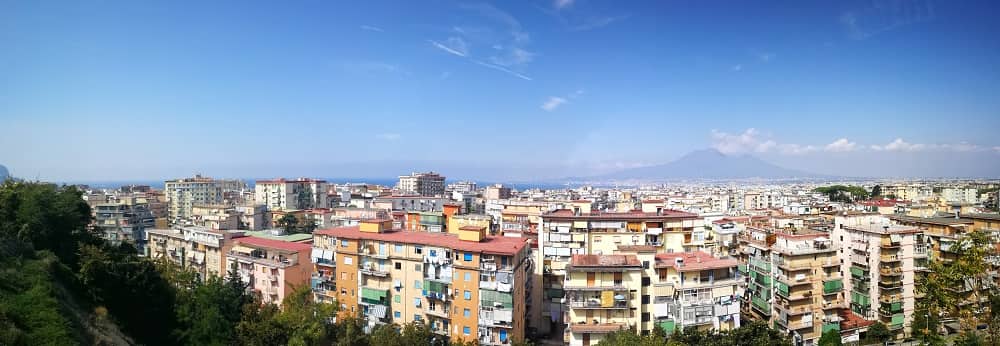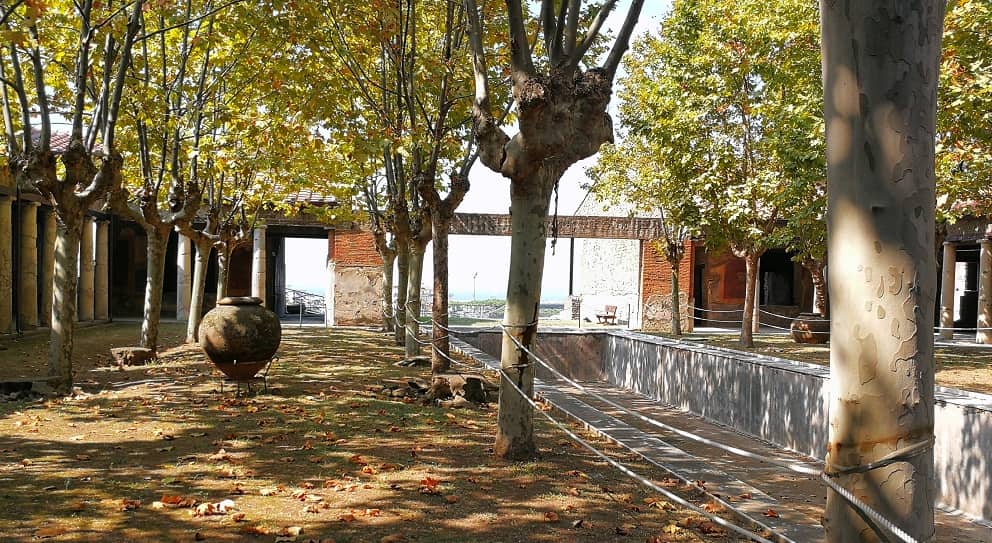The Ancient Stabia and its Villas
Also the Ancient Stabiae, today Castellammare di Stabia, was damaged by the eruption of Vesuvius in 79 AD, known for having destroyed the beauties of Pompeii and Herculaneum. Villa Arianna and Villa San Marco are the two most important villas discovered first between 1750-1754 (well-preserved by ash and pumice debris) and then brought back to light again in the 1950s. The last restoration ended in 2018.

Villa Arianna, the most ancient villa of Stabia

Villa Arianna is the most ancient villa of Stabia, it was built during the 2nd century. B.C. and occupies approx. 2500 square meters. It takes its name by a fresco representing Ariadne abandoned by Theseus found in the back wall of the triclinium.
The frescoes representing vivid mythological scenes are as beautiful and important as those of Pompeii, however less known. You go through arcades with beautiful frescoes, you can get into the kitchens, the beautifully decorated rooms with staterooms and thermal areas. A place with a strong suggestive power, where the typical Pompeian red still rulers on the walls and columns , the refinement and meticulousness of the decorations accompany the silence of the hill, all framed by a breathtaking panoramic view. In fact the Romans could enjoy the view of the Gulf of Naples and the majesty of Vesuvius. Let's imagine the fright felt by the guests of the villa during such a devastating eruption acting in front of them.

Villa San Marco, the biggest dwelling in the Ancient Stabiae

Villa S. Marco, on the other hand, is one of the largest of the Roman residential villas and occupies an area of approximately 11,000 square meters, of which only 6,000 currently uncovered.
The walls covered with marble in the lower part and frescoed in the upper part gave a sumptuous touch to the villa. A thermal area district, an atrium with a rustic area and rooms for servants, kitchens, panoramic cubicles on the gulf, finely frescoed diet and a peristyle porch with garden, nymphaeum and tub 36 meters long and 7 wide stand out. There are numerous and famous mosaics and frescoes currently preserved in the National Archaeological Museum of Naples. The villa takes its name by an ancient chapel dedicated to St. Marco built there in the second half of the 1700s.
Also located in the Varano area, it has the Lattari Mountains behind it, and faces the Gulf of Naples. In fact, even from this villa the Romans (and you now) could admire the wonderful sunset that takes place over the gulf. It has a very particular structure and its strategic position allow you to enjoy a unique view and let fresh air into the residence.
Legend and Information about Villa San Marco and Villa Arianna

Pliny the Younger narrates in a letter addressed to Tacitus the feats of his uncle Pliny the Elder following the eruption of Vesuvius in 79 AD. It is said, then, that Pliny the Elder took refuge in one of the two villas during the eruption of Vesuvius to look for some of his friends and save them. It is not well known but Villa San Marco might have hosted the last moments of the historian's life.
Villa San Marco and Villa Arianna are open to the public and the admission is free of charge. The address is via Passeggiata Archeologica, Castellammare di Stabia (Na), easily reachable by private transfer or public transportations as the Circumvesuviana (the Naples - Sorrento line) or bus lines.
"Fortune favors the bold; straighten the bow towards Pomponiano's villa in Stabiae!"
About the author
Written on 12/03/2021




Liliana Moccia
We are located on the coast of the Gulf of Naples where, in Roman times, luxurious villas were built and they were desired by "celebrities" and aristocrats for their vacations. Villa Arianna and Villa San Marco are the only remaining examples of dwellings within the Archaeological Excavations of Stabia, part of the great Archaeological Park of Pompeii.